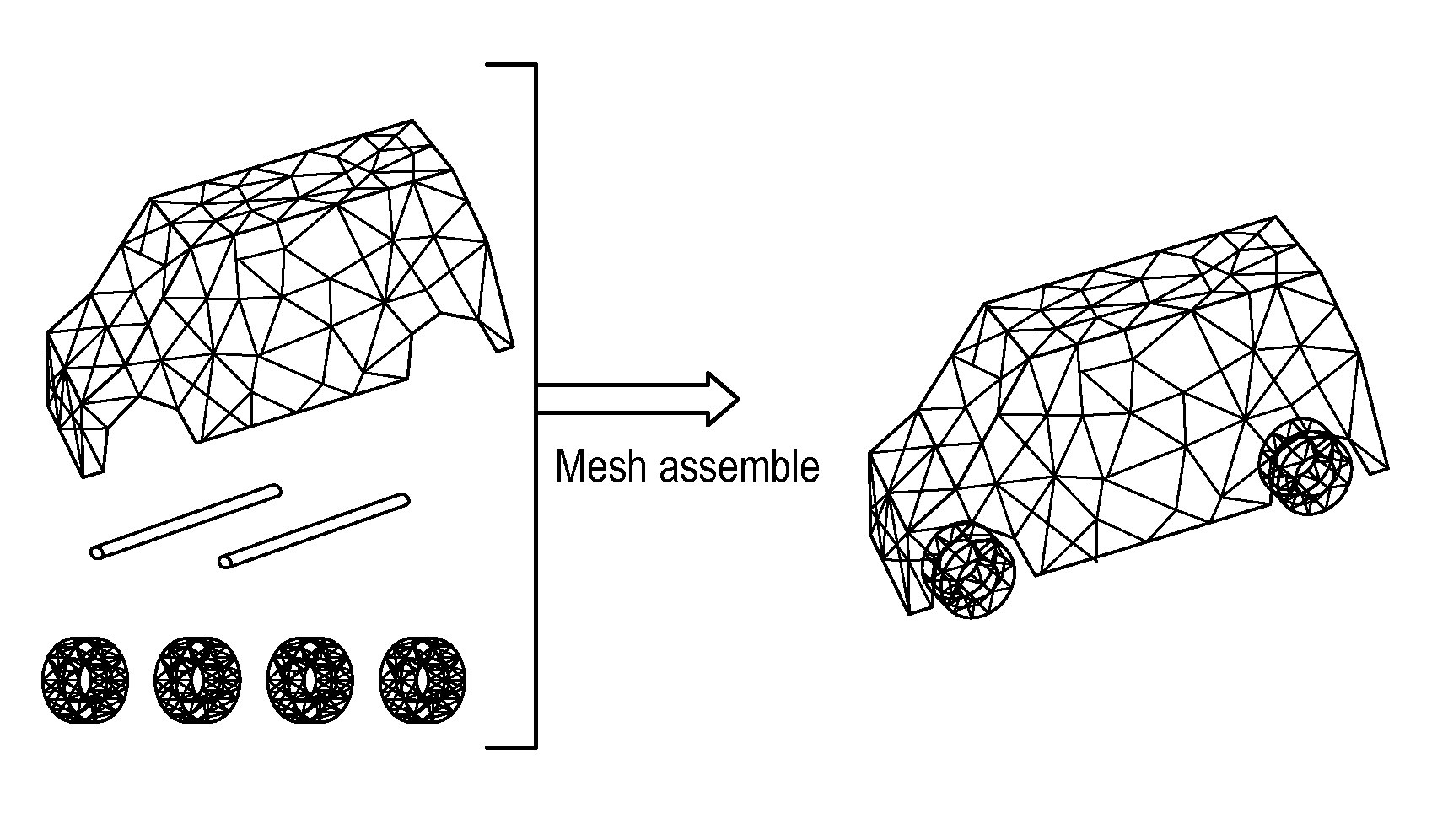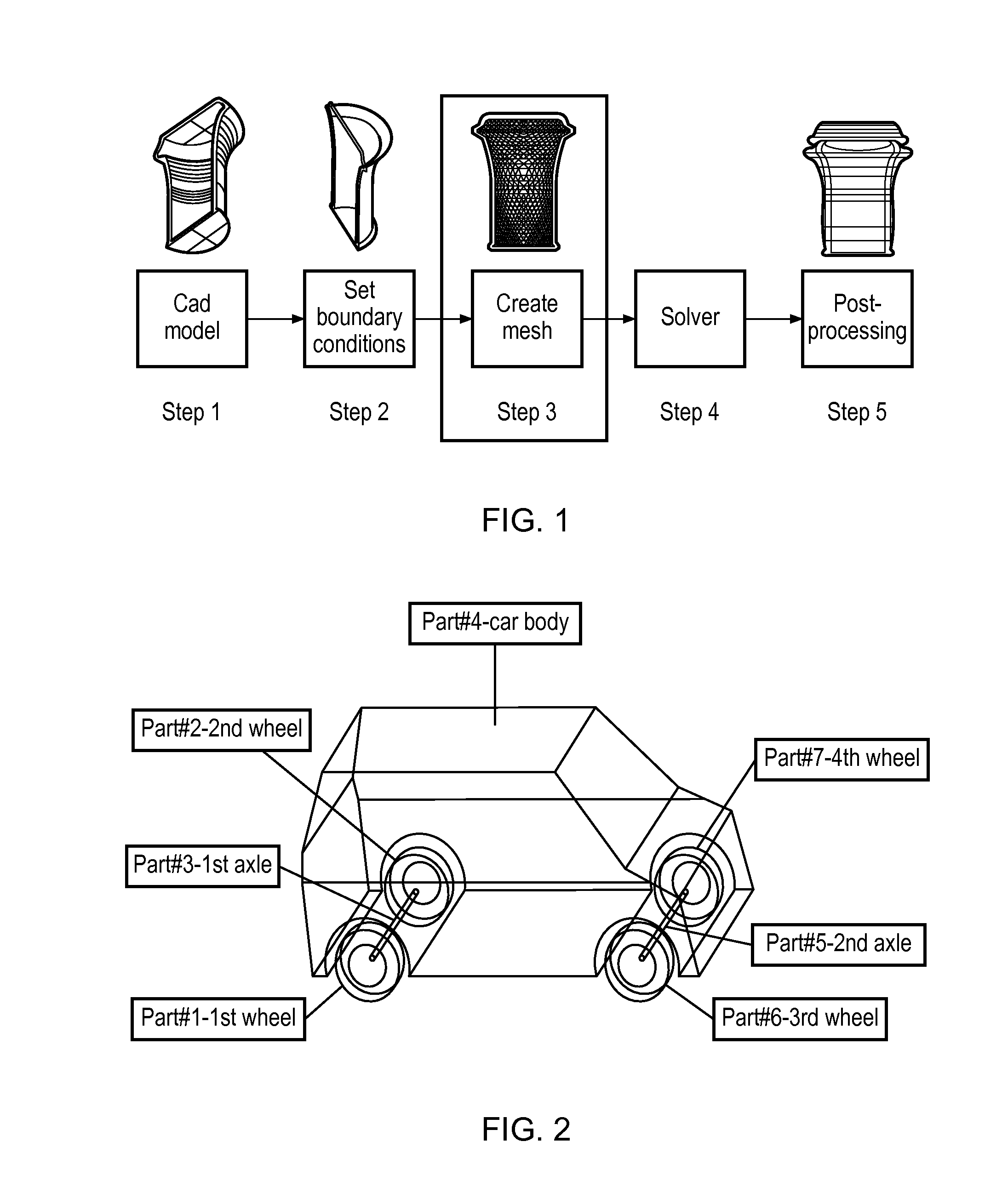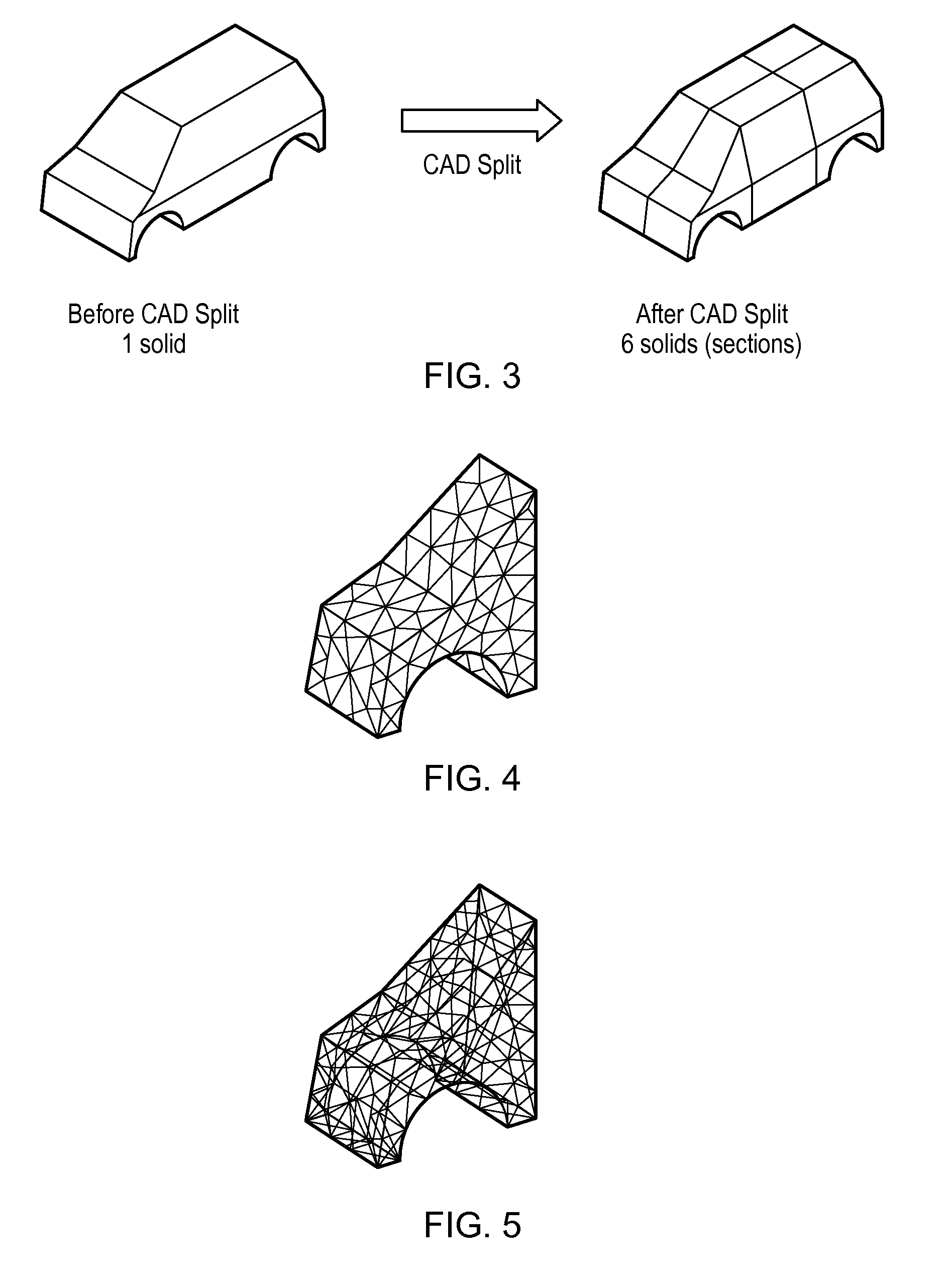Decoupled parallel meshing in computer aided design
a parallel meshing and computer aided design technology, applied in the field of decoupled parallel meshing in computer aided design, can solve the problems of many opportunities for parallelism lost, coarse meshes are in general more difficult to create than fine ones, and memory is a severe limitation of such codes, so as to achieve better scalability
- Summary
- Abstract
- Description
- Claims
- Application Information
AI Technical Summary
Benefits of technology
Problems solved by technology
Method used
Image
Examples
Embodiment Construction
[0074]Before describing an embodiment which brings together the different aspects of the present invention, the terms used in the present application will now be defined.
Assembly Model
[0075]An assembly model is a CAD model consisting of multiple solids, which may or may not be in physical contact with each other. A simple assembly model consisting of seven parts, labelled Parts#1 to #7, is shown in FIG. 2. Real-world assembly models used in industry, which this invention targets, can have hundreds or thousands of parts, of different shapes and sizes. Throughout the present application, the term part will have the meaning of a single solid component of an assembly model. For the sake of consistency, if the input CAD file consists of a single solid, we will refer to it as an assembly with one part.
CAD Splitting (Cutting, Partitioning)
[0076]In the present application CAD splitting is defined as the operation of splitting / cutting / partitioning a solid into a number of sections. For examp...
PUM
 Login to View More
Login to View More Abstract
Description
Claims
Application Information
 Login to View More
Login to View More - R&D
- Intellectual Property
- Life Sciences
- Materials
- Tech Scout
- Unparalleled Data Quality
- Higher Quality Content
- 60% Fewer Hallucinations
Browse by: Latest US Patents, China's latest patents, Technical Efficacy Thesaurus, Application Domain, Technology Topic, Popular Technical Reports.
© 2025 PatSnap. All rights reserved.Legal|Privacy policy|Modern Slavery Act Transparency Statement|Sitemap|About US| Contact US: help@patsnap.com



